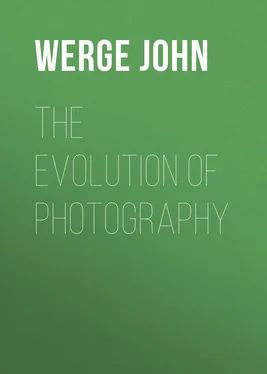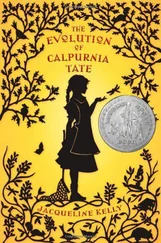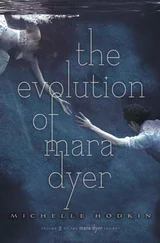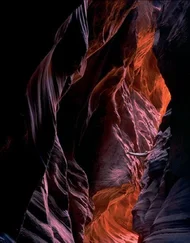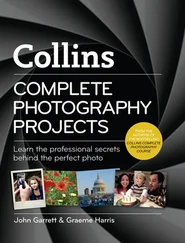John Werge - The Evolution of Photography
Здесь есть возможность читать онлайн «John Werge - The Evolution of Photography» — ознакомительный отрывок электронной книги совершенно бесплатно, а после прочтения отрывка купить полную версию. В некоторых случаях можно слушать аудио, скачать через торрент в формате fb2 и присутствует краткое содержание. Жанр: visual_arts, foreign_home, на английском языке. Описание произведения, (предисловие) а так же отзывы посетителей доступны на портале библиотеки ЛибКат.
- Название:The Evolution of Photography
- Автор:
- Жанр:
- Год:неизвестен
- ISBN:нет данных
- Рейтинг книги:5 / 5. Голосов: 1
-
Избранное:Добавить в избранное
- Отзывы:
-
Ваша оценка:
- 100
- 1
- 2
- 3
- 4
- 5
The Evolution of Photography: краткое содержание, описание и аннотация
Предлагаем к чтению аннотацию, описание, краткое содержание или предисловие (зависит от того, что написал сам автор книги «The Evolution of Photography»). Если вы не нашли необходимую информацию о книге — напишите в комментариях, мы постараемся отыскать её.
The Evolution of Photography — читать онлайн ознакомительный отрывок
Ниже представлен текст книги, разбитый по страницам. Система сохранения места последней прочитанной страницы, позволяет с удобством читать онлайн бесплатно книгу «The Evolution of Photography», без необходимости каждый раз заново искать на чём Вы остановились. Поставьте закладку, и сможете в любой момент перейти на страницу, на которой закончили чтение.
Интервал:
Закладка:
Having described the conditions and state of progress photography had attained at the time of my first contact with it, I think I may now enter into greater details, and relate my own personal experiences from this period right up to the end of its jubilee celebration.
I was just fourteen years old when photography was made practicable by the publication of the two processes, one by Daguerre, and the other by Fox Talbot, and when I heard or read of the wonderful discovery I was fired with a desire to obtain a sight of these “sun-pictures,” but the fire was kept smouldering for some time before my desire was gratified. Nothing travelled very fast in those days. Railroads had not long been started, and were not very extensively developed. Telegraphy, by electricity, was almost unknown, and I was a fixture, having just been apprenticed to an engraving firm hundreds of miles from London. But at last I caught sight of one of those marvellous drawings made by the sun in the window of the Post Office of my native town. It was a small Daguerreotype which had been sent there along with a notice that a licence to practise the “art” could be obtained of the patentee. I forget now what amount the patentee demanded for a licence, but I know that at the time referred to it was so far beyond my means and hopes that I never entertained the idea of becoming a licencee. I believe some one in the neighbourhood bought a licence, but either could not or did not make use of it commercially.
Some time after that, a Miss Wigley, from London, came to the town to practise Daguerreotyping, but she did not remain long, and could not, I think, have made a profitable visit. If so, it could scarcely be wondered at, for the sun-pictures of that period were such thin, shimmering reflections, and distortions of the human face divine, that very few people were impressed either by the process or the newest wonder of the world. At that early period of photography, the plates were so insensitive, the sittings so long, and the conditions so terrible, it was not easy to induce anyone either to undergo the ordeal of sitting, or to pay the sum of twenty-one shillings for a very small and unsatisfactory portrait. In the infancy of the Daguerreotype process, the sitters were all placed out-of-doors, in direct sunshine, which naturally made them screw up or shut their eyes, and every feature glistened, and was painfully revealed. Many amusing stories have been told about the trials, mishaps, and disappointments attending those long and painful sittings, but the best that ever came to my knowledge was the following. In the earliest of the forties, a young lady went a considerable distance, in Yorkshire, to sit to an itinerant Daguerreotypist for her portrait, and, being limited for time, could only give one sitting. She was placed before the camera, the slide drawn, lens uncapped, and requested to sit there until the Daguerreotypist returned. He went away, probably to put his “mercury box” in order, or to have a smoke, for it was irksome—both to sitter and operator—to sit or stand doing nothing during those necessarily long exposures. When the operator returned, after an absence of fifteen or twenty minutes, the lady was sitting where he left her, and appeared glad to be relieved from her constrained position. She departed, and he proceeded with the development of the picture. The plate was examined from time to time, in the usual way, but there was no appearance of the lady. The ground, the wall, and the chair whereon she sat, were all visible, but the image of the lady was not; and the operator was completely puzzled, if not alarmed. He left the lady sitting, and found her sitting when he returned, so he was quite unable to account for her mysterious non-appearance in the picture. The mystery was, however, explained in a few days, when the lady called for her portrait, for she admitted that she got up and walked about as soon as he left her, and only sat down again when she heard him returning. The necessity of remaining before the camera was not recognised by that sitter. I afterwards reversed that result myself by focussing the chair, drawing the slide, uncapping the lens, sitting down, and rising leisurely to cap the lens again, and obtained a good portrait without showing a ghost of the chair or anything else. The foregoing is evidence of the insensitiveness of the plates at that early period of the practice of photography; but that state of inertion did not continue long, for as soon as the accelerating properties of bromine became generally known, the time of sitting was greatly reduced, and good Daguerreotype views were obtained by simply uncapping the lens as quickly as possible. I have taken excellent views in that manner myself in England, and, when in America, I obtained instantaneous views of Niagara Falls and other places quite as rapidly and as perfect as any instantaneous views made on gelatine dry plates, one of which I have copied and enlarged to 12 by 10 inches, and may possibly reproduce the small copy in these pages.
In 1845 I came into direct contact with photography for the first time. It was in that year that an Irishman named McGhee came into the neighbourhood to practise the Daguerreotype process. He was not a licencee, but no one appeared to interfere with him, nor serve him with an injunction, for he carried on his little portrait business for a considerable time without molestation. The patentee was either very indifferent to his vested interests, or did not consider these intruders worth going to law with, for there were many raids across the borders by camera men in those early days. Several circumstances combined to facilitate the inroads of Scotch operators into the northern counties of England. Firstly, the patent laws of England did not extend to Scotland at that time, so there was a far greater number of Daguerreotypists in Edinburgh and other Scotch towns in the early days of photography than in any part of England, and many of them made frequent incursions into the forbidden land without troubling themselves about obtaining a licence, but somehow they never remained long at a time; they were either afraid of consequences, or did not meet with patronage sufficient to induce them to continue their sojourns beyond a few of the summer weeks. For many years most of the early Daguerreotypists were birds of passage, frequently on the wing. Among the earliest settlers in London, were Mr. Beard (patentee), Mr. Claudet, and Mr. J. E. Mayall—the latter is still alive, 1889—and in Edinburgh, Messrs. Ross and Thompson, Mr. Howie, Mr. Poppawitz, and Mr. Tunny—the latter was a Calotypist—with most of whom it was my good fortune to become personally acquainted in after years.
Secondly, a great deal of ill-feeling and annoyance were caused by the incomprehensible and somewhat underhanded way in which the English patent was obtained, and these feelings induced many to poach on photographic preserves, and even to defy injunctions; and, while lawsuits were pending, it was not uncommon for non-licencees to practise the new art with the impunity and feelings common to smugglers. Mr. Beard, the English patentee, brought many actions at law against infringers of his patent rights, the most memorable of which was that where Mr. Egerton, 1, Temple Street, Whitefriars, the first dealer in photographic materials, and agent for Voightlander’s lenses in London, was the defendant. During that trial it came out in evidence that the patentee had earned as much as forty thousand pounds in one year by taking portraits and fees from licencees. Though the judgment of the Court was adverse to Mr. Egerton, it did not improve the patentee’s moral right to his claim, for the trial only made it all the more public that the French Government had allowed M. Daguerre six thousand francs (£240), and M. Isidore Niépce four thousand francs (£160) per annum, on condition that their discoveries should be published, and made free to all the world . This trial did not in any way improve Mr. Beard’s financial position, for eventually he became a bankrupt, and his establishments in King William Street, London Bridge, and the Polytechnic Institute, in Regent Street, were extinguished. Mr. Beard, who was the first to practise Daguerreotyping commercially in this country, was originally a coal merchant. I think Mr. Claudet practised the process in London without becoming a licencee, either through previous knowledge, or some private arrangement made with Daguerre before the patent was granted to Mr. Beard. It was while photography was clouded with this atmosphere of dissatisfaction and litigation, that I made my first practical acquaintance with it in the following manner:—
Читать дальшеИнтервал:
Закладка:
Похожие книги на «The Evolution of Photography»
Представляем Вашему вниманию похожие книги на «The Evolution of Photography» списком для выбора. Мы отобрали схожую по названию и смыслу литературу в надежде предоставить читателям больше вариантов отыскать новые, интересные, ещё непрочитанные произведения.
Обсуждение, отзывы о книге «The Evolution of Photography» и просто собственные мнения читателей. Оставьте ваши комментарии, напишите, что Вы думаете о произведении, его смысле или главных героях. Укажите что конкретно понравилось, а что нет, и почему Вы так считаете.
